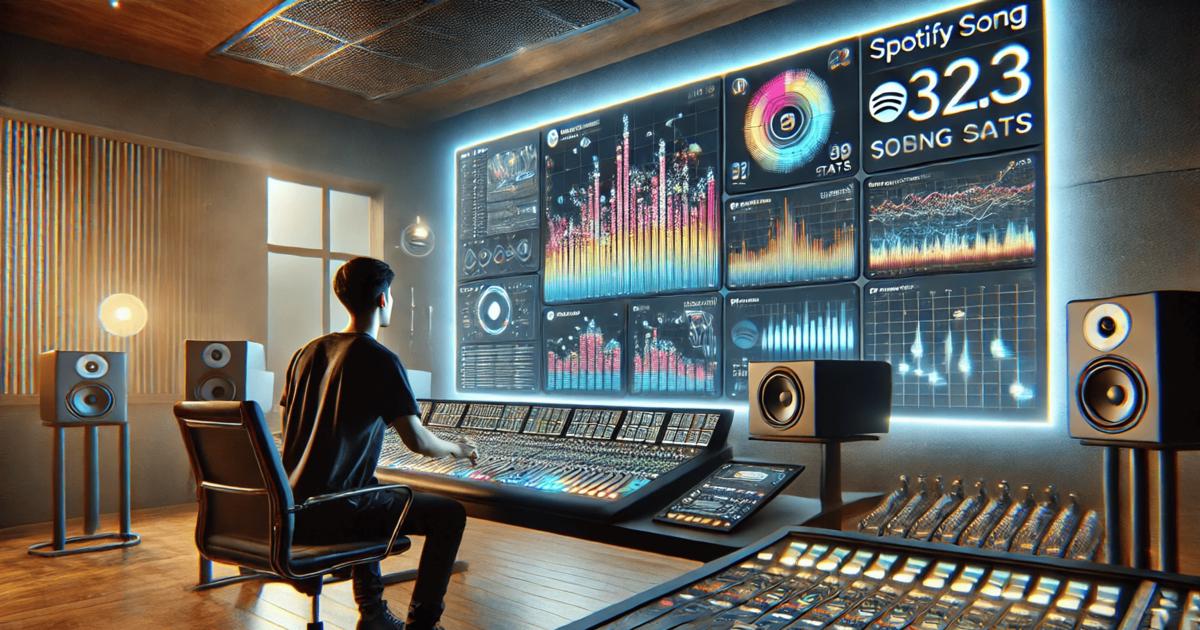How to Use Spotify Stats Song Data to Improve Your Tracks
How to Use Spotify Stats Song Data to Improve Your Tracks
Know what each metric means
Understanding Spotify’s key metrics is the first step to making better production and release decisions. A stream is only counted if someone listens for at least 30 seconds, so skips before that mark don’t add to your numbers. Monthly listeners measure unique people who listened in the last 28 days, while your active audience represents those who actively choose your music, not just those who hear you through playlists.
The sources of streams reveal where listeners are finding your tracks. They might come from your profile or catalog, from listeners’ own playlists, editorial playlists curated by Spotify’s team, or algorithmic playlists like Release Radar and Discover Weekly. Each playlist type responds to different signals—editorial lists rely on human curation while algorithmic ones depend on listener behavior.
Turn stats into production choices
Interpreting your data is where the real value lies. If your streams look solid but saves are low, your idea might be catchy but not sticky. Tighten the hook and make sure it arrives within the first 30–45 seconds. If algorithmic sources bring plays without saves, shorten your intros, bring in vocals earlier, and cut filler. If editorial placements provide streams but listeners don’t add your track to personal playlists, you may need to strengthen your chorus lift or add a distinct sonic element.
Arrangement insights can also come from data. Rising “streams per listener” suggests strong replay value, meaning you should keep elements like hooks or standout sounds. Flat replays with modest saves suggest the need for stronger contrasts, such as an earlier chorus, more dynamic shifts, or decluttering the mix before the hook.
Comparing tempos, keys, and rhythmic feels between your best and weakest tracks can also reveal patterns to replicate in new work. If low saves coincide with many first-time listeners, the issue could lie in vocals or lyrics. Pay attention to vocal clarity, hook placement, and whether your lyrics and melody align. Finally, don’t overdo volume—Spotify normalizes loudness. Instead, focus on clean, punchy mixes with strong transients.
Post-release workflow
Your workflow after release is equally important. In the first week, monitor sources of streams. If algorithmic numbers are strong, your release strategy is on track. If editorial playlists dominate, you may need to align your sound more with that style. Between days 7 and 14, calculate save rates and streams per listener. Weak saves suggest adjusting your next single with a shorter intro, earlier hook, or tweaked mix. By days 14–28, compare listener growth to follower growth. If listeners rise but followers don’t, you’re gaining awareness but not loyalty, which means your follow-up track should have a stronger identity.
You can also test multiple edits with a small fan group before releasing—such as shorter versus longer intros—and pick the version that earns more saves. For older tracks with high saves but low streams, consider a remaster or radio edit to revive them.
Using analytics tools to measure your data
While Spotify for Artists provides basic insights, professional analysis requires advanced tools. Three leading options are , , and . Each offers different dashboards and features tailored to help you act on the patterns described above.
Viberate
Viberate offers pricing from €19.90/month (billed annually at €239). Its Spotify Analytics Dashboard includes modules that cover multiple dimensions of performance. The “Career Health on Spotify” section compares your rankings with peers in your genre, helping you benchmark where you stand. The overview snapshot covers followers, monthly listeners, and streams, with clear growth trends.
Signature Tracks and Streams modules highlight which songs are driving your performance, while the Tracks table lists all releases with detailed metrics. Follower Growth and Popularity help identify whether you are building a lasting audience or only experiencing short-term spikes. Modules like Monthly Listeners by City and Country show your top markets, making it easier to plan promotions or tours.
With features like “Fans Also Like,” you can spot potential collaborators and competitors. Most modules come with export options, interactive visuals, and filtering tools, making Viberate especially practical for artists who want to dig into specifics while maintaining a big-picture view.
Chartmetric
Chartmetric is one of the more premium tools, priced at $150/month or $1400/year. Its dashboard is highly detailed, with modules such as Spotify Overview, which provides trend graphs on follower growth, playlist reach, and monthly listeners. The Audience and Fanbase module gives geographic breakdowns, highlighting cities and countries where engagement is strongest.
Other useful areas include City and Country Monthly Listeners Evolution, which helps identify markets where you’re gaining or losing traction. The “Fans Also Like” module lists overlapping audiences, which is valuable for planning collaborations. Chartmetric’s Top Tracks and Albums and Spotify Playlists sections highlight which songs and placements are performing best.
The Playlist Recommendation module identifies playlists you could target, while Spotify Charts and Chart Scores reveal how your tracks perform globally. Spotify Achievements highlight key milestones, which can be shared with fans or partners. For larger teams and labels, Chartmetric offers one of the most comprehensive views of Spotify data, supporting marketing, touring, and production decisions.
Songstats
Songstats is priced at €999.99/year for professionals covering all artists and labels. Its focus leans toward playlist analytics and track performance. The Playlist Growth Analytics module tracks how playlists featuring your music evolve, including total reach over time. Performance Metrics provide a compact overview of streams, listeners, and popularity.
The Top Performing Tracks module highlights your standout songs, while the Top Playlists and Recently Playlisted sections show where momentum is building. Detailed Playlist and Chart modules reveal ownership, type, follower counts, and track positions, making it possible to spot which playlists drive the most exposure. For artists focused on playlist strategies, Songstats provides streamlined but powerful tracking tools.
Final thoughts
Knowing how to interpret spotify stats song data is only half the battle. The other half is having the right tools to measure performance with accuracy and detail. Whether you choose Viberate for its affordability and well-rounded dashboard, Chartmetric for its in-depth analytics and trend tracking, or Songstats for playlist-focused insights, the key is to consistently monitor and adjust. By connecting your creative choices with real audience behavior, you can improve not only your production but also your chances of long-term growth as an artist.




